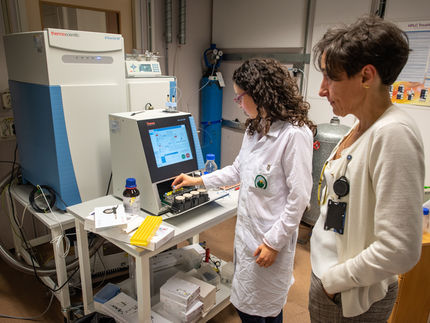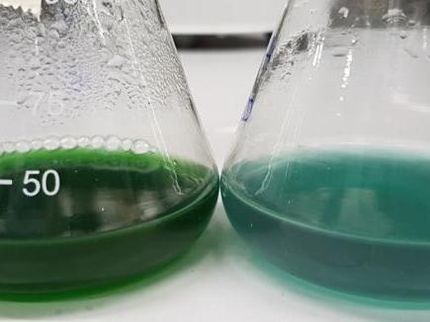Toxic waste: cigarette butts harm the environment twice
Chemicals released from cigarette butts damage 'beneficial parasites'
Advertisement
Cigarette butts do not belong in the environment. Yet they often end up there, especially near water bodies. A survey by the Leibniz Institute of Freshwater Ecology and Inland Fisheries (IGB) has shown that many of Berlin's waters contain considerable amounts of nicotine, which is also toxic to aquatic life. A new IGB study now shows that some organisms may benefit indirectly: toxic cyanobacteria. This is because cigarette butts in the water harm their parasites. The study was published in the journal Ecotoxicology and Environmental Safety.
Around 5 trillion cigarettes are consumed worldwide each year, and studies show that around 90 percent (4.5 trillion) are discarded improperly. This makes cigarette butts one of the world's most widespread types of waste.
The main way nicotine enters waterways is through rainfall
Cigarette butts are thrown away on the shore or even in the water. Even flicked into the drain they can cause damage in freshwater ecosystems: because nicotine is very water soluble. If it rains, about half of the substance in a cigarette butt will have leached out after 30 minutes.
A team led by IGB researcher Dr Markus Venohr measured nicotine concentrations in various water bodies in Berlin in the summer of 2019. The researchers took samples from four lakes, nine ponds, eight canals and two canalised streams. "After rainfall, nicotine concentrations increased significantly in almost all the water bodies studied, especially in the canals connected to the sewage system, where they increased by an average of 16 times. During the dry summer, nicotine levels were particularly high in bathing lakes such as Krumme Lanke“, said Markus Venohr.
For freshwater organisms, the safety threshold of 400 nanograms per litre for short-term exposure is considered to be the 'predicted no effect concentration' (PNEC). The average concentration in all water bodies sampled during the study period was 28 nanograms per litre – i.e. mostly below the safety threshold. After rainfall, however, the average concentration was 148 nanograms per litre, with the highest concentration in the Teltowkanal at 1470 nanograms per litre after rainfall.
Chemicals released from cigarette butts damage 'beneficial parasites' that keep toxic cyanobacteria in check
It is already known that nicotine and other ingredients in cigarette butts can harm various aquatic organisms such as fish, molluscs, crustaceans and phytoplankton by impairing their survival, growth, mobility or development.
Dr. Erika Martinez-Ruiz, a researcher from the „Disease Evolutionary Ecology“ group of Professor Justyna Wolinska, has made a surprising discovery in a laboratory study. Focusing on the iteractions between parasites and their hosts, with fungi and cyanobacteria as models, Erika Martinez-Ruiz discovered that compounds leached from cigarette butts, including metals and nicotine , can inhibit infection by chytrid fungi. „This inhibition, in turn, indirectly promotes the growth of cyanobacteria, revealing the previously unrecognized ecological impact of cigarette waste on aquatic environments“, explained Erika Martinez-Ruiz.
"Toxic cyanobacteria can pose a problem for the production of drinking water or for recreational water use. Their growth is regulated by various factors such as temperature and nutrient availability, but also by parasitism and grazing pressure. Chytrid fungi are key parasites that play a crucial role in regulating cyanobacteria populations by killing the cyanobacteria cells they infect", said Justyna Wolinska.
Complex pollutant mixtures affect species communities
Traditional ecotoxicity tests usually focus on the effects of individual pollutants on single species. However, the latest study shows that this approach is not sufficient: pollutants usually occur in mixtures in the environment and impact complex, multi-species systems. Considering these interactions would more accurately reflect real-world conditions and allow a deeper understanding of the effects of pollutants on aquatic ecosystems.





























































